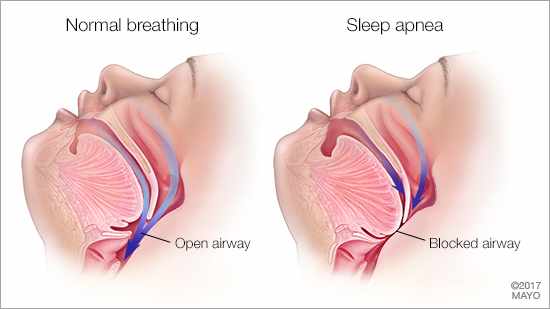Sleep Tight
Stephen Deal • Dec 19, 2018

Sleep Tight
Sleep is another hot topic in modern medicine and is now making its way to the dental profession, with good reason. Poor sleep is evident everywhere in society today. Whether its tossing and turning at night, feeling tired all day long, early morning headaches and facial muscle soreness, wetting the bed (for children), or just plain ole dry mouth in the morning, it all stems from something that we focus on in this blog series: a compromised airway. As stated in previous posts, obtaining oxygen is priority number one for the human body and anything that gets in the way of this priority will be changed or altered. Many of these changes that occur can be noticed in the mouth and face. This blog will go over some of the signs and symptoms of poor sleep and then will discuss ways to cope with the issues (band-aid) as well as ways to fix the issues.
Before getting to the symptoms it is important to understand what is going on during sleep. To grossly simplify it, there are cycles that the body goes through during sleep, some of which are more important in terms of valuable sleep than others. In order to get to the important cycles, the body must be truly relaxed and can’t have any interruptions, namely in oxygen intake. For most people who breathe through their noses and have plenty of oxygen, getting to these cycles is not typically an issue. However, for people who have smaller airways due to any number of reasons (underdeveloped jaws, large neck diameter, obesity, large tongues, mouth breathing, etc.) getting to this relaxed deep sleep state can be very difficult. These people can “sleep” the whole night but only spend a few minutes in the important cycles. If it is difficult to intake the oxygen, often times there will be signs like snoring or grinding the teeth. This is simply the body attempting to change the things that are in its way of getting oxygen as referenced earlier. For example, in a situation where there is excessive grinding at night, the body is telling the lower jaw (and tongue with it) to go forward out of the way of the airway so that more oxygen can flow to the lungs uninhibited. However, the lower jaw is typically trapped backwards by the upper teeth (retruded maxilla, see first blog post for more info), so when it tries to come forward you get grinding and wearing of the lower teeth against the uppers. Sometimes this happens at such a high degree that patients will completely wear their teeth down to flat planes. Another example of a sign of poor sleep is snoring. This is the sound the loose soft tissue in the airway is making as oxygen is trying to move past it. For a mental image, try picturing your lungs as a balloon filling with air, and then deflating through the small airway with flabby neck tissue surrounding it. In the balloon analogy the flappy noise you hear when letting the air out of a balloon really fast represents the noise you hear from someone snoring. If there were a larger exit diameter for the air in the balloon and the air in your lungs, there would be no flappy snore sound.
You can imagine that with just these two issues, getting the oxygen can be a big chore for the body on autopilot. Thus, during the struggle, the brain sends a “wake up” signal and the person will toss and turn and wake up slightly to try to restart the whole process. Worn teeth or grinding at night is a good indication that you may have a compromised airway and your body is struggling to breath while on autopilot. The muscle soreness and headache symptoms people with poor sleep often have, stem from the same issues. The muscles in your face are trying to help the lower jaw and other tissues move out of the airway’s way to make it easier on the person, but when these muscles spend every night doing this same thing over and over they eventually will fatigue and the patient will wake up in the morning with soreness in the temples and face or even headaches.
Ever notice someone in your family that can fall asleep at the drop of a hat? Or as soon as dad or grandpa hit the recliner they are out like a light? These people are obviously not obtaining the proper kind of sleep at night and are very tired after going through their normal everyday activities to the point where any sign of relaxation tells the body, “let’s try and get some valuable rest”. All of these signs and many more can tell the dentists and even the patient that something is going on to prevent them from sleeping well.
While dentists have long since recognized these factors, most of the time the only treatment or advice they provide is to visit an ENT or sleep specialist and have a sleep study done. This is excellent and even lifesaving advice, as studies have shown sleep apnea can shorten one’s life by 10-15 years. A sleep study is so useful for determining exactly what kind of sleep and the amount of time of useful sleep you are getting. A short example comes from my small-town practice where a patient of mine presented with extremely worn-down teeth and inflamed jaw muscles. The patient didn’t remember ever grinding or clenching their teeth during the day, but they were starting to have serious concerns with their morning headaches and overall fatigue. After several questions and a history, I explained some of the things talked about in this blog and recommended the first thing they do was have a sleep study. A few months pass, they got the sleep study done and came back to me for their 6-month cleaning. The patient said that 4 hours through their sleep study the doctor woke them up and told them that this was one of the worst cases of sleep apnea (apnea=lack of oxygen) they had ever seen. They told the patient that they were averaging 10 minutes of valuable sleep a night!!! Imagine trying to go to work every day with only ten minutes of good rest. The doctor prescribed the patient a CPAP machine to wear at night to provide a positive pressure of oxygen down their airway. The patient had been wearing the CPAP for about a month when they came back to the office and stated that they had never felt better in their lives. They could sleep just two hours and feel completely refreshed and ready to go. Incredible!! So, for dentists, recognizing the signs and symptoms of sleep disordered breathing and recommending a visit to the patients’ doctor for a sleep study can help the patient immensely, but it is not the only help you can give.
As talked about earlier, most of the time the underlying problem during poor sleep are things getting in the way of a small airway (most of the time the tongue and lower jaw). The lower jaw is typically trapped there by the upper teeth, and although the body is trying to release the trap on its own by grinding the teeth down to flat planes, it often will cause serious damage first. Wearing a CPAP machine will help get the patient to sleep better by pushing oxygen through the smaller airway, but it won’t completely resolve the underlying issue. There are some treatment options that a dentist can give to help with the jaw position issues and increase airway volume. Simple treatment options that don’t permanently fix the underlying problems but allow the patient to sleep better (band-aid) consist of a sleep appliance. These removable appliances are worn at night and generally hold the lower jaw in a more forward position. Studies show these devices can increase the airway by 30%. This can make it easier for oxygen to flow while laying down. Like the CPAP, this does not fix the underlying problem, but does significantly increase valuable sleep time and allow the patient to feel more rested. To ultimately address and repair the reasons for poor sleep, a more dedicated treatment is necessary. Developing or remodeling the upper jaw and releasing the trap on the lower jaw and tongue will allow more space for the oxygen to flow freely during sleep, and at all times for that matter. With a properly developed upper jaw, the tongue is allowed the space to posture forward in the mouth during sleep, so the body doesn’t need to damage your teeth and muscles to open the airway to breathe. It will prevent people from having to sleep with their mouths open to get enough oxygen.
This development and remodeling of the jaws are accomplished through growth guidance and ControlledArch orthodontics at our clinic. Details about this treatment can be given at any time but the gist of it is that an appliance is fixed on the upper teeth that slowly signals the body to remodel and develop the upper jaw. With a more developed upper jaw, the lower jaw now has additional room to remodel in a more airway-friendly forward position. After the jaws have both remodeled forward the whole process is finished with braces to bring the teeth together and hold the jaws in this position. The essence of this treatment is removing the epigenetics (environmental influence) and allowing the body to remodel the jaws in a more favorable position to make obtaining oxygen easier without disrupting facial symmetry.
To end, it is important to note that there can be many issues that can prevent people from getting solid sleep, but most of them all relate back to trouble in the airway. If you feel like you are having trouble sleeping at night a good place to start is by getting a sleep study. There are dentists out there now, myself included, who make a lot of sleep appliances and sometimes that is all the patient will need to relieve the symptoms of poor sleep and obtain adequate rest. However, in light of recent research and development of specialized appliances, we as dentists are now able to find a more definitive solution to the underlying issues. As stated in the last blog, a good plan and great treatment all stem from proper diagnosis and taking into account every issue that could play a part.








